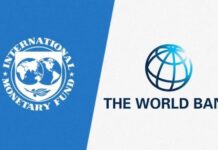The humanitarian crisis in Somalia, characterized by both natural and man-made factors, is one of the most complex and longstanding emergencies in the world.
Somalia is currently facing Locust crisis, mainly in northern and central regions, with potential further expansion to southern Somalia, therefore categorized at the highest threat level, “dangerous” whilst Somalia simultaneously entered the Gu rainy season in March, displacing over 400,000, although some flood displaced communities were able to return home. With 2.6 million displaced persons, COVID-19 continues to pose an additional challenge in already fragile context where it may further hinder access to basic services, leaving the population highly vulnerable.
As a key source, transit and, to some extent, destination country for migratory flows, Somalia continues to have an influx of migrants from neighboring countries through irregular migration routes, especially from Ethiopia. Hundreds of migrants are stranded in Bossaso as a result of border and sea-crossing closures brought on by the COVID-19 pandemic. IOM data show that migration in the Eastern route is still taking place despite the new border restrictions in the region. While more people continue to arrive in Bossaso, higher number of Ethiopian migrants are stranded in the city.
IOM estimates that nearly 400 migrants are currently hosted by members of the Ethiopian community living in informal settlements around the city. Recognizing that mobility is a determinant of health and risk exposure, there is a need to urgently adopt innovative, systematic, multisectoral and inclusive responses to mitigate, prepare for and respond to COVID-19 amongst the migrant population.
As of 13 July, Somalia has confirmed 3,059 COVID-19 cases in the country, 93 reported fatalities and 1,343 recovered cases.




